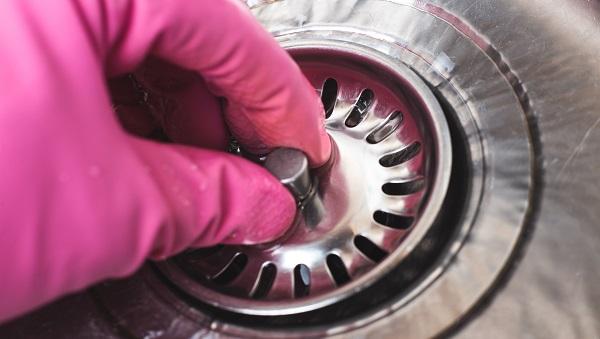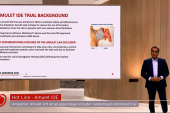Delayed Peridevice Leak Not Uncommon After Watchman Implant
Clinical outcomes were worse in patients with leaks, regardless of their size. “All leaks matter,” Mohamad Alkhouli says.

Many patients have new peridevice leak detected 45 to 90 days after an initially successful left atrial appendage (LAA) occlusion procedure, a finding that is associated with worse clinical outcomes, a multicenter study shows.
Of patients treated with the Watchman 2.5 device (Boston Scientific) across four US centers, roughly one in every 10 developed a delayed leak, with an average size of 3.2 mm, according to data published recently online ahead of print in JACC: Clinical Electrophysiology, with lead author Muhammad Afzal, MD (The Ohio State University Wexner Medical Center, Columbus).
Clinical trials have used a threshold of 5 mm or greater to assess the presence of meaningful peridevice leaks and the need to continue oral anticoagulation. But in this study, patients with any leaks—regardless of size—were more likely to have stroke or TIA during follow-up than were those without leaks (8.3% vs 2.7%; P = 0.005).
These results are “bringing light to a very clinically relevant finding that has been previously ignored, by and large,” senior author Christopher Ellis, MD (Vanderbilt University Medical Center, Nashville, TN), told TCTMD.
Moreover, it’s “the first study that really brings into question the 5-mm threshold for safety to withhold anticoagulation after Watchman implant,” Ellis said. “Patients in the 3- to 5-mm range should be carefully surveilled over time for enlarging leaks or neurologic events or other indications to close the leak or to resume anticoagulation.”
Commenting for TCTMD, Mohamad Alkhouli, MD (Mayo Clinic, Rochester, MN), said the study is “a timely reminder that we still haven’t addressed this issue completely, and with the increasing volume of those procedures, it’s a great addition to the literature.”
He pointed out that even small leaks (≤ 3 mm) were associated with a stroke/TIA rate of 10% in this study. Those events may not have been related to the leaks, said Alkhouli, “but I think the message here should be that all leaks matter and we should just try to get as complete of a closure as we can at the beginning.”
Tracking What Happens With Delayed Leaks
The goal of LAA occlusion, Ellis pointed out, is to get patients with atrial fibrillation who aren’t good candidates for long-term anticoagulation off the blood-thinning medications. Based on what was done in the Watchman trials, any peridevice leak under 5 mm has typically been deemed satisfactory and a good enough result to justify stopping oral anticoagulation, he explained.
But “those of us that have been seeing enough patients of our own over time have noticed that the leak kind of never goes away on its own,” Ellis said. “Some patients will have TIAs and the only thing you see is a decent-size peridevice leak, and a lot of times they’re in that sort of 3- to 5-mm range.” So they’re below the 5-mm cutoff but not insignificant, he said. “For sure, this 5-mm arbitrary number I think is suspect.”
To get an idea of what happens with peridevice leaks over time following initially successful LAA occlusion, the investigators looked at data on 1,039 patients who underwent a successful Watchman implant (no immediate peridevice leak) at their respective centers, with most patients (97%) receiving the first-generation Watchman 2.5 device rather than the new-generation Watchman FLX.
Overall, 108 patients (10.5%) had a peridevice leak detected by transesophageal echocardiography (TEE) at 45 to 90 days; were eligible for anticoagulation; and had a least one additional TEE performed during follow-up. Roughly two-thirds (68%) had a leak of 3 mm or smaller.
Leaks of 3 mm or smaller, on average, shrank in size over a median follow-up of 275 days (2.2 to 1.6 mm; P = 0.002); most patients in this group (86%) had stable or reduced leak size. On the other hand, leaks larger than 3 mm did not change in size during a median follow-up of 208 days (4.9 to 4.0 mm; P = 0.12); only 31% of patients in this group had stable or reduced leak size.
Alkhouli said the findings that most large leaks don’t change over time is “contrary to some other beliefs, and that has implications because we tell the patients, ‘Well, maybe we’ll image you again in a few months and we’ll see if it’s better,’ and this data suggests that it doesn’t get better.”
The researchers also found that patients with larger versus smaller leaks were more likely to have an adverse clinical outcome (failure to stop anticoagulation after 45 to 90 days, TIA, stroke, device-related thrombus, or peridevice leak closure)—69% versus 34% (P = 0.002). That was mostly related to a difference in the rate of staying on anticoagulation (51% vs 16%; P = 0.001).
As a whole, patients with any delayed peridevice leak were more likely to have a stroke or TIA during follow-up compared with other patients who underwent a successful Watchman implant.
Better Understanding of Leaks Needed
The problem of peridevice leaks after LAA occlusion requires multiple solutions, Alkhouli said. “We should first fix the way we think about the leak, and move away from sizing to mechanism,” he said. He pointed out that two 3-mm leaks can be quite different, with one indicative of a tiny side leak at the edge of the device and the other the manifestation of a completely uncovered LAA lobe. “More work has to be done into how we define leaks, what is important.”
Secondly, devices need to continue to improve, he suggested, noting that newer ones—like the Watchman FLX—provide a better seal than the first-generation Watchman. Recently reported results of the Amulet IDE trial show that the Amplatzer Amulet device (Abbott) also provides better closure compared with the Watchman 2.5.
“So I think it’s a combo of us understanding the leaks more and then the technology improving to reduce the chance of having a leak,” Alkhouli said.
Once a leak occurs, there is not strong evidence indicating the best way to handle it. Various centers use either coil embolization or plugs to close the leaks, and some operators are testing out ablation.
“I don’t think we have enough data to say that any of this works or is it effective or not,” Alkhouli said, adding that a paper his group currently has under review may provide some insights. “Until we have more data, I would just err on the side of trying to optimize your deployment and use the newer devices . . . . Prevention is the key here.”
Ellis pointed out that all of the patients in the current series had seemingly good procedural outcomes, with no immediate peridevice leaks, suggesting that it’s not clear how the procedures could have been optimized to prevent the later leaks. “I don’t think you really could get rid of these by repositioning the device or putting it in a different spot because it looked great when we implanted it and then over time these leaks developed.” He noted, too, that delayed leaks were seen even in patients treated with the newer Watchman FLX device.
Trying to figure out which leaks require closure and which can be left alone is a different story, and there is a lot of variation out in practice, Ellis added. “You’ve got to follow those patients closely. You may want to favor putting them back on anticoagulation if they can tolerate it, or consider some method of coiling or eliminating the leak.” Leaks bigger than 5 mm should definitely be closed, he said, “but we would say maybe 3 mm plus some change between two imaging time points, or certainly any leak plus a TIA.”
In a broader sense, peridevice leak is one of two big issues (along with clots on the device) that need to be worked out as the population of patients treated with LAA occlusion grows, Ellis said. “If you can get rid of those, the net clinical benefit of appendage occlusion is going to look really good.”
Todd Neale is the Associate News Editor for TCTMD and a Senior Medical Journalist. He got his start in journalism at …
Read Full BioSources
Afzal MR, Gabriels JK, Jackson GG, et al. Temporal changes and clinical implications of delayed peridevice leak following left atrial appendage closure. J Am Coll Cardiol EP. 2021;Epub ahead of print.
Disclosures
- Ellis reports receiving research grants (to Vanderbilt University) from Boehringer Ingelheim, Medtronic, and Boston Scientific and being a consultant or advisor to Medtronic, Abbott Medical, Boston Scientific, and Atricure.
- Afzal reports no relevant conflicts of interest.





Comments